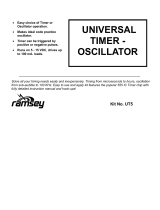
Description
Reference
Designator
Volatility Description
Accessible
for external
data
Remedial Action (Action necessary to
prevent loss of data)
6GB GDDR6 for nVidia
N19E-Q1
8GB GDDR6 for nVidia
N19E-Q3
16GB GDDR6 for nVidia
N19EQ5
8GB GDDR5 for AMD
WX7100-F16M-H1
Security
Controller
Serial
Flash
Memory
U2 (up-sell
USH
daughter
board)
Non Volatile memory, 32 Mbit
(4Mbyte)
No N/A
drive(s)
replaceable
Non Volatile magnetic media,
various sizes in GB. May also be
SSD (solid state flash drive) and
Hybrid HDD.
Controller
Non Volatile memory, 16K bytes
flash memory
No N/A
FW
embedded
in PD
controller
128 KB of embedded Flash
memory for PD controller
No N/A
controller
FW
Non Volatile memory, 8 Mbit
(1MB), Thunderbolt/type C
operation
No N/A
CAUTION: All other components on the system board lose data if power is removed from the system. Primary power loss
(unplugging the power cord and removing the battery) destroys all user data on the memory (DDR4, 2666/3200 MHz-XMP
config). Secondary power loss (removing the on-board coin-cell battery) destroys system data on the system configuration and
time-of-day information.
In addition, to clarify memory volatility and data retention in situations where the system is put in different ACPI power
states the following is provided (those ACPI power states are S0, S1, S3, S4 and S5):
S0 state is the working state where the dynamic RAM is maintained and is read/write by the processor.
S1 state is a low wake-up latency sleeping state. In this state, no system context is lost (CPU or chip set) and hardware
maintains all system contexts.
S3 is called “suspend to RAM” state or stand-by mode. In this state the dynamic RAM is maintained. Dell systems will be
able to go to S3 if the OS and the peripherals used in the system supports S3 state. Win8 support S3 state.
S4 is called “suspend to disk” state or “hibernate” mode. There is no power. In this state, the dynamic RAM is not
maintained. If the system has been commanded to enter S4, the OS will write the system context to a non-volatile storage
file and leave appropriate context markers. When the system is coming back to the working state, a restore file from the nonvolatile
storage can occur. The restore file has to be valid. Dell systems will be able to go to S4 if the OS and the peripherals
support S4 state. Win8 support S4 state.
S5 is the “soft” off state. There is no power. The OS does not save any context to wake up the system. No data will remain in
any component on the system board, i.e. cache or memory. The system will require a complete boot when awakened. Since
S5 is the shut off state, coming out of S5 requires power on which clears all registers.
The following table shows all the states supported by Dell Precision 7740:



